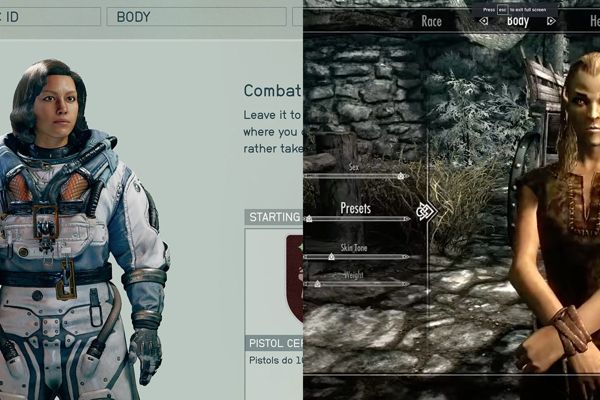
Starfield's Potential for a Much Smaller Scale

Former lead designer of Skyrim, Bruce Nesmith, unveils the initial concept for Starfield in an insightful video interview, shedding light on how the game's original vision differed from its final form
Highlights
Starfield's initial scope was smaller and relied less on procedural generation, according to an interview with former Bethesda developer, Bruce Nesmith.
Despite the massive size of the Settled Systems in Starfield, there are concerns about the game's exploration due to the procedural generation of planets and the lack of variety in their layouts. However, Akila City, a major quest hub, still manages to capture the unique charm of Bethesda games.
The team made the decision to include procedural generation in Starfield to enhance the game's scope. Although there were some drawbacks, the focus remained on the two dozen star systems that offered the core gameplay experience.
Since its launch, the size of Starfield has been a topic of disagreement. Bruce Nesmith recently revealed that the game's original plan was smaller, with less reliance on procedural generation. Bethesda games are known for their addictive exploration of handcrafted environments like Skyrim or Fallout 4's Commonwealth. In comparison, many players felt that Starfield's procedurally generated worlds lacked the same charm, despite improved combat and gameplay.
Currently, players generally agree that exploration in Starfield could be better. While the Settled Systems offer an enormous scope, the procedural generation of planets goes against the strengths of Bethesda's titles, and the layouts aren't varied enough to make up for it. However, major quest hubs like Akila City still capture the Bethesda charm, offering a glimpse into a different Starfield experience than the one players initially encountered.
For Bruce Nesmith, the former lead designer of Skyrim, this vision of Starfield became momentarily attainable during the development process. In a recent interview with MinnMax, Nesmith revealed that there were extensive discussions regarding the scope of Starfield. Initially, the game was limited to approximately two dozen star systems. However, the temptation to expand the game's scale proved too powerful, leading Starfield to adopt procedurally generated planets, albeit with a few associated drawbacks.
Nesmith suggested that Todd Howard initially came up with the idea of having one hundred systems without any prior basis, but as the development progressed using the new procedural approach, the number not only became possible but also the main focus of Starfield remained in those two dozen systems. Bruce Nesmith speculated that Bethesda probably had to make some difficult decisions to ensure the game's overall scope, taking into consideration features like Starfield's ship builder, despite being well aware that players would express dissatisfaction with certain aspects of the game's exploration that didn't fully meet their expectations in the final product.
Now that the development of the next Elder Scrolls game is in full swing, Bethesda finds itself in a dilemma. The reception to procedurally generated content in Starfield has been underwhelming, which might lead the developers to once again prioritize handcrafted environments. Nevertheless, the technology developed for Starfield could still prove valuable, and Bethesda should be commended for taking a risk – even though Nesmith's original vision might have potentially resulted in a more enjoyable game in retrospect.
Starfield is available on PC and Xbox Series X/S.













